I'm plotting correlations in ggpairs and am splitting the data based on a filter.
The density plots are normalising themselves on the number of data points in each filtered group. I would like them to normalise on the total number of data points in the entire data set. Essentially, I would like to be able to have the sum of the individual density plots be equal to the density plot of the entire dataset.
I know this probably breaks the definition of "density plot", but this is a presentation style I'd like to explore.
In plain ggplot, I can do this by adding y=..count.. to the aesthetic, but ggpairs doesn't accept x or y aesthetics.
Some sample code and plots:
set.seed(1234)
group = as.numeric(cut(runif(100),c(0,1/2,1),c(1,2)))
x = rnorm(100,group,1)
x[group == 1] = (x[group == 1])^2
y = (2 * x) + rnorm(100,0,0.1)
data = data.frame(group = as.factor(group), x = x, y = y)
#plot of everything
data %>%
ggplot(aes(x)) +
geom_density(color = "black", alpha = 0.7)
#the scaling I want
data %>%
ggplot(aes(x,y=..count.., fill=group)) +
geom_density(color = "black", alpha = 0.7)
#the scaling I get
data %>%
ggplot(aes(x, fill=group)) +
geom_density(color = "black", alpha = 0.7)
data %>% ggpairs(., columns = 2:3,
mapping = ggplot2::aes(colour=group),
lower = list(continuous = wrap("smooth", alpha = 0.5, size=1.0)),
diag = list(continuous = wrap("densityDiag", alpha=0.5 ))
)
Are there any suggestions that don't involve reformatting the entire dataset?




